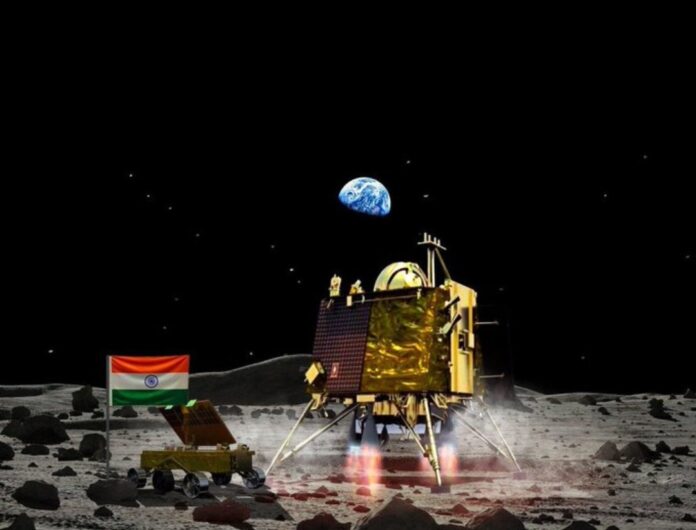India achieved a historic milestone as ISRO’s ambitious Chandrayaan-3 mission successfully landed its Lander Module (LM) on the lunar surface on Wednesday. This accomplishment makes India the fourth country to achieve this feat and the first to reach the previously unexplored southern pole of the Moon.
Chandrayaan-3 Mission:
— ISRO (@isro) August 23, 2023
'India????????,
I reached my destination
and you too!'
: Chandrayaan-3
Chandrayaan-3 has successfully
soft-landed on the moon ????!.
Congratulations, India????????!#Chandrayaan_3#Ch3
This achievement is a significant boost to India’s space capabilities. The LM, which includes the lander named Vikram and a 26 kg rover called Pragyan, executed a gentle landing near the Moon’s south polar region at 6.04 pm. Impressively, this achievement comes within a week of a Russian lander experiencing a crash during a similar landing attempt.

India has now mastered the intricate technology of softly landing on the lunar surface after the United States, China, and the former Soviet Union. Chandrayaan-3, a subsequent mission to Chandrayaan-2, has several goals, including showcasing safe and gentle lunar landings, rover exploration on the Moon, and conducting on-site scientific experiments.
हर देशवासी की तरह मेरा मन चंद्रयान महाअभियान पर भी लगा हुआ था।
— PMO India (@PMOIndia) August 23, 2023
नया इतिहास बनते ही हर भारतीय जश्न में डूब गया है, हर घर में उत्सव शुरू हो गया है: PM @narendramodi pic.twitter.com/vliDpW4uc5
Chandrayaan-2 had faced difficulties during its lunar phase when its lander, Vikram, crashed into the Moon due to anomalies in its braking system, just moments before its intended landing on September 7, 2019. The maiden Chandrayaan mission was conducted in 2008.
Also read: NavIC: India’s Own Navigation System by ISRO.
The Chandrayaan-3 mission, with a budget of Rs 600 crore, was launched on July 14 using the Launch Vehicle Mark-III (LVM-3) rocket. This marked the beginning of its 41-day journey to approach the vicinity of the lunar south pole.
This soft landing achievement follows closely after Russia’s Luna-25 spacecraft crashed into the Moon due to a loss of control.
The lander, equipped with four legs and a variety of sensors including accelerometers, altimeters, Doppler velocimeters, inclinometers, touchdown sensors, and hazard avoidance cameras, ensured a secure touchdown. The lander contained the rover within a compartment that had a ramp for smooth deployment onto the lunar surface. Operating for roughly one lunar daylight period (approximately 14 Earth days), the lander and the six-wheeled rover have a combined mass of 1,752 kg.


